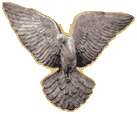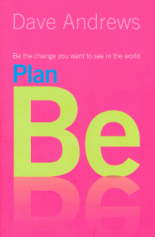A Dignified Indigenous Leader
Beruk was born in 1824 at Brushy Creek near present-day Croydon in Victoria. He was brought up in the customs of the Wurundjeri people, but before he could be properly initiated his people were displaced from their traditional lands by settlers along the Yarra and Plenty Rivers.
As a youngster, Beruk was said to have been present when John Batman held his famous 1835 meeting with tribal elders and “purchased” the site on which Melbourne was built.
Beruk received a basic English education at the Yarra mission school. When he came of age, his relatives inducted him into their tribal lore and invested him with the narrow bone nose peg, reed necklet, possum shawl and waist string of manhood.
In 1844 Beruk joined the Native Mounted Police, and Trooper No. 19 was given the name William Barak. During his time in Captain Dana’s unit, he earned a reputation as a sober and serious trooper.
In 1859 Beruk settled in Acheron with Lizzie, his first wife, hoping to have the area reserved. In 1863 land near Healesville was gazetted and Beruk moved into a “neat little cottage” in a 9.6 square kilometre community they named “Coranderrk”, after a local flowering plant.
Coranderrk Station proved to be an extraordinarily successful self-sufficient community enterprise, growing and selling prize-winning produce to the emerging markets in Melbourne. One reason for its success was the wise leadership the community had in William Barak and Simon Wanga. Another reason was the manager, John Green. Appointed by the Aboriginal Protection Board, he was a “devout Christian, had almost no prejudices, had full faith in the Aboriginal people, their community, their capabilities, (and) what they were able to achieve.”
Beruk found John Green’s faith inspirational. He was baptized and confirmed as a Christian and, after Lizzie died, he married his second wife Annie in a Presbyterian ceremony. From that point on Beruk carried “a boomerang in one hand and a Bible in the other” as a culturally sensitive Christian leader.
It was this faith that would help Beruk stand steadfast in the grief-laden years ahead, as one by one the members of his beloved family died and bit by bit the elements of his beloved community were dismantled.
Not only did both of Beruk’s wives die, but also four of their children. So by the time he died, Beruk was the “sole full-blood survivor” of his tribe. In the meantime, the Aboriginal Protection Board coopted Coranderrk’s business, fired Green and hired a “whitefella” who’d bring the “blackfellas” under control. He also ran the business into the ground and, when it was bankrupt, sold off the property because it was “too valuable for Aboriginal people”.
Those who knew Beruk described him as “wise and dignified – with penetrating eyes and firm principles”. During this period, dressed in his famous long coat and sandshoes, Beruk made multiple trips to Melbourne on foot – dragging himself, crippled, over the one hundred kilometre journey there and back – to plead with the government “to give us this ground. and no one over us.and let us manage ourselves.and we will show the country we can make it pay”. But his pleas fell on deaf ears.
When it was clear the authorities didn’t care, Beruk turned to painting traditional pictures in charcoal and ochre as a way of preserving what was left of his culture. It is for his art he is mostly remembered.
On 15 August 1903 Beruk died. In 1934 a marble monument was erected in the main street of Healesville. He was one of the most sincere, sensitive, persevering leaders – black or white – the nation had ever seen. But the statue – like the man – was defaced by vandals. It now marks his grave in Coranderrk.
Dave Andrews
http://www.tear.org.au/target/articles/beruk-a-dignified-and-defaced-indigenous-leader/2010-3



